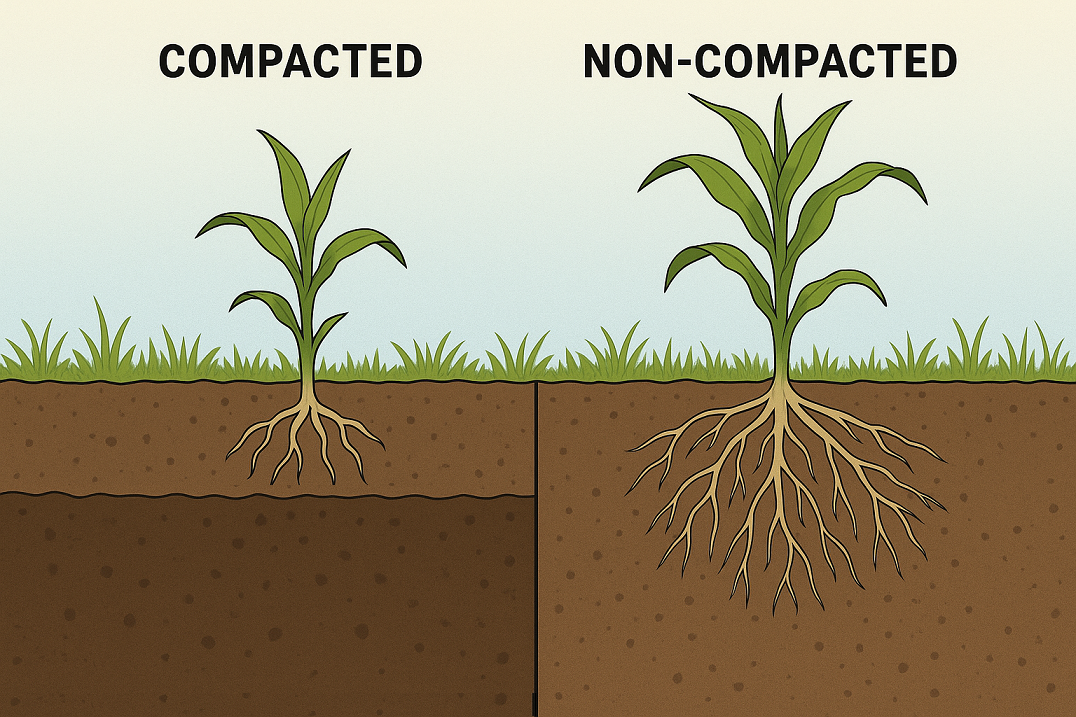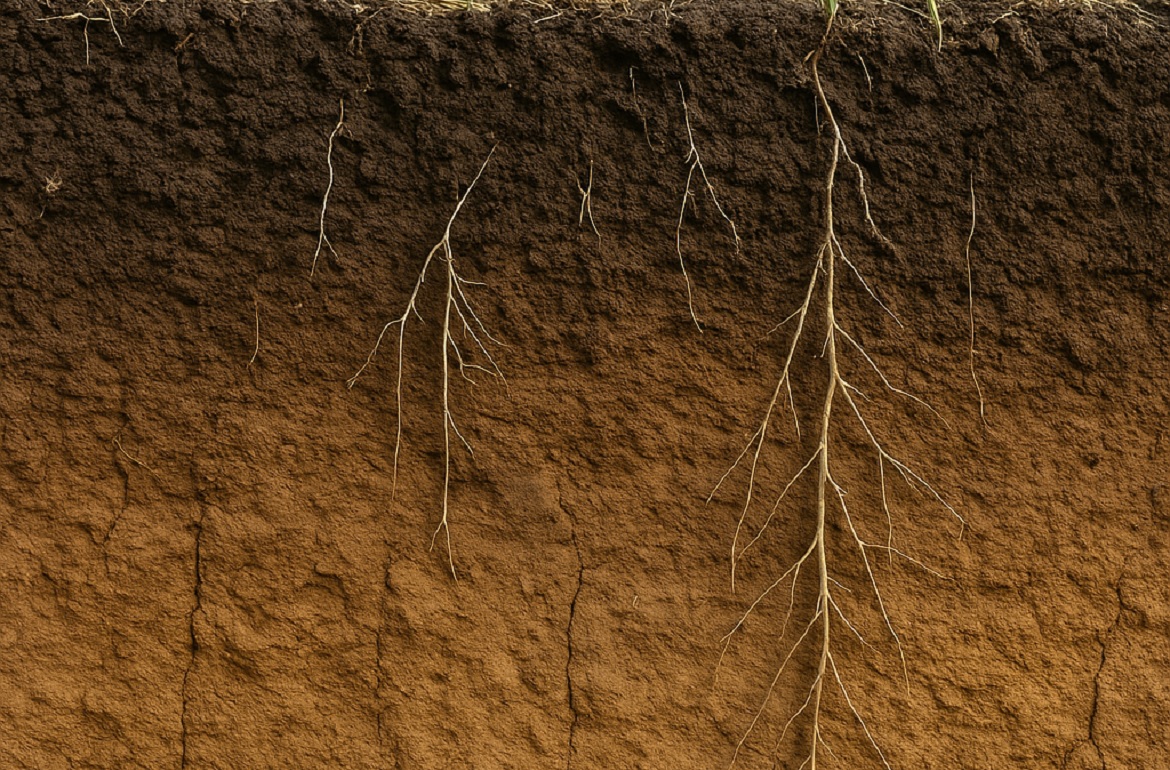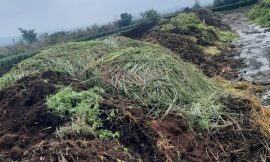Standard soil sampling protocols typically focus on the top 0-20 cm (0-0.8 inch) layer, where the majority of nutrient applications and root initiation occur. However, this conventional approach overlooks a critical zone – the subsoil, particularly the 30-60 cm depth. This soil layer often plays a decisive role in determining root development, nutrient uptake, and ultimately, crop yield potential.
Chemical, physical, and hydrological constraints commonly found in the subsoil highlight why conventional surface-level diagnostics fail to capture the full agronomic picture.
Implications for decision-making
Ignoring subsoil conditions leads to over-reliance on surface amendments, inefficient resource use, and unexplained yield variability. Integration of subsoil diagnostics into agronomic planning allows for more accurate fertilizer prescriptions, tailored tillage, and selection of adapted crop genotypes.
Furthermore, the economic return on subsoil management is often realized in terms of input efficiency and yield stability. For dryland and irrigated systems alike, rooting depth and function are non-negotiable components of yield resilience.
Subsoil vs. topsoil: differences that impact yields
While the topsoil is dynamic and frequently amended through fertilization, cultivation, and organic matter inputs, the subsoil is generally more stable and less disturbed. This stability, however, often masks underlying constraints:
Nutrient stratification and fixation
Phosphorus is largely immobile and tends to accumulate in the topsoil. Without deep placement, crops face a functional P deficiency in the subsoil, particularly under moisture stress. Moreover, in soils with high Fe and Al oxides, any phosphorus reaching the subsoil is rapidly immobilized.
Acidity and aluminum toxicity
In regions with long-term ammonium-based fertilization or naturally acidic parent material, subsoil pH can decline below critical thresholds (<5.2), mobilizing exchangeable aluminum to phytotoxic levels. These conditions severely impair root elongation and nodulation in legumes.
Sodicity and poor soil structure
In irrigated or naturally sodic soils, the subsoil may exhibit elevated exchangeable sodium percentage (ESP). High ESP might lead to clay dispersion, reduced porosity, and impaired infiltration. This condition is not always evident in the top 20 cm.
Compaction and bulk density
A compacted subsoil, whether induced by heavy machinery, shallow tillage layers, or naturally dense horizons, restricts root penetration and vertical water movement. Bulk densities >1.6 g/cm³ in fine-textured soils are commonly limiting.

Hydrological discontinuities
Abrupt texture changes, for instance, a sandy loam topsoil overlying a heavy clay subsoil , can result in perched water tables and anaerobic conditions in the root zone. This impairs microbial activity, root respiration, and nutrient uptake.
Functional consequences for crop development
The extent of root proliferation into the subsoil is a major determinant of a crop’s ability to access water and nutrients during critical phenological stages. Crops with genetically deep rooting potential, such as corn, sunflower, or sorghum, frequently encounter growth-limiting layers that limit rooting depth and reduce effective rooting volume.
A few examples:
Corn: Root growth typically extends beyond 1.5 m (60 inches) under optimal conditions. However, subsoil compaction or acidity at 40-50 cm (15-20 inches) depth commonly restricts access to subsoil nitrogen and late-season moisture, particularly during grain fill.
Soybean: Sensitive to subsoil acidity and associated Al toxicity. This impairs rhizobial activity and biological nitrogen fixation even when surface pH is within optimal range.
Canola: Susceptible to subsoil salinity and chloride accumulation, which can delay flowering and reduce pod set.
The physiological capacity of the crop is constrained by root system limitations. Therefore, in such scenarios, standard nutrient applications and surface irrigation strategies provide limited return on investment.
Supporting research:
Remediation of subsoil compaction and compaction effects on corn N availability
Subsoil compaction effect on spatio-temporal root growth
Limitations of standard soil sampling — and how to go deeper
Most soil testing focuses on the top 0-20 cm layer, where fertilizers are applied and early root growth occurs. However, this narrow sampling range overlooks the variability and constraints present in deeper layers. As a result, farmers and agronomists may misidentify the true cause of poor crop performance, leading to unnecessary inputs or ineffective interventions.
To properly assess subsoil conditions, deeper diagnostic methods are required:
- Deep core sampling: Take samples from 20-40 cm and 40-60 cm depths. Analyze for key parameters such as pH, electrical conductivity (EC), exchangeable sodium percentage (ESP), extractable phosphorus (P), potassium (K), and toxic elements like aluminum (Al³⁺). These values often differ significantly from those in the topsoil.
- Profile pits: A simple but powerful tool. By digging a pit at least 60 cm deep, you can directly observe root distribution, identify compacted or dense layers, and detect signs of waterlogging such as gleying or mottling. This method reveals the functional structure of the soil profile.
- Cone penetrometer: Measures soil resistance to root penetration. Readings above 2 MPa in moist soil indicate compacted layers that restrict root growth. Such layers are common between 30-50 cm and are often invisible in surface assessments.
- Geophysical sensing (e.g., EM38, gamma-ray spectroscopy): These tools map soil properties like texture, salinity, and moisture across the field. They are useful for identifying zones that require targeted sampling or remediation, especially where field variability is high.
Practical solutions for subsoil constraints
Managing subsoil constraints is a long-term process and often depends on site-specific conditions. However, several proven agronomic practices can help improve subsoil structure and function:
Subsoiling and deep ripping: These are deep tillage practices used to break up compacted layers in the subsoil, typically between 30 and 60 cm depth. Subsoiling uses narrow shanks to loosen soil with minimal surface disturbance, while deep ripping is a more aggressive operation that works across a wider area and often to greater depths.Both improve root penetration and water movement, especially when carried out under optimal soil moisture conditions (close to field capacity). However, the benefit is often temporary unless followed by practices that prevent re-compaction, such as controlled traffic farming or planting deep-rooted cover crops to help maintain improved soil structure.
Amendment incorporation:
- Gypsum (CaSO₄·2H₂O): Improves structure in sodic subsoils by displacing Na⁺ from exchange sites.
- Lime (CaCO₃): Deep banding can correct subsoil acidity but requires precision placement and adequate moisture to be effective.
Cover crops with deep-root systems: Species like Daikon radish, lupin, or ryegrass develop strong taproots that can penetrate compacted subsoil layers. As these roots grow and decompose, they create natural channels that improve aeration, drainage, and root access for the following crop. This biological approach to loosening soil complements mechanical tillage and helps maintain long-term soil structure.
Controlled traffic farming (CTF): Confining machinery movement to permanent wheel tracks minimizes random soil compaction across the field. This approach significantly reduces the risk of re-compacting previously loosened subsoil layers, helping to preserve the benefits of subsoiling or deep ripping.
In addition, maintaining uncompacted zones between wheel tracks improves water infiltration, root development, and overall soil structure over time.
Deep nutrient placement: In low-P subsoils, strategic banding of phosphorus or blended fertilizers below 20 cm can improve availability at depth.
Managing subsoil deserves a central place in agronomic planning
The 30-60 cm subsoil layer represents a critical zone for agronomic performance. While it remains invisible to standard soil sampling, its influence on crop productivity is substantial. Addressing subsoil constraints requires technical assessment, site-specific management, and long-term strategy — but the gains in yield potential and input efficiency make it a priority area for both farmers and agronomists.
Understanding what lies beneath the topsoil is no longer optional. It is an agronomic imperative.




